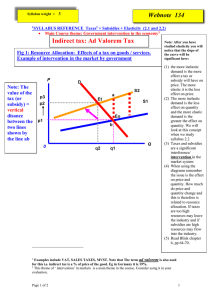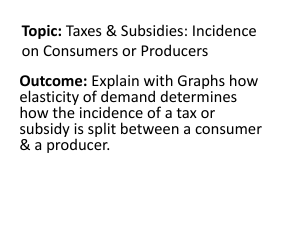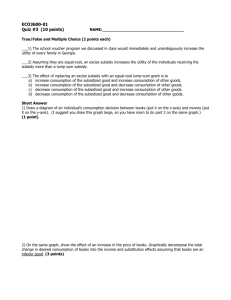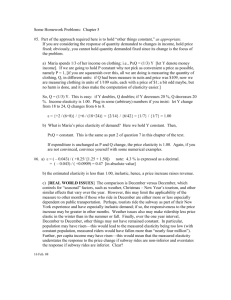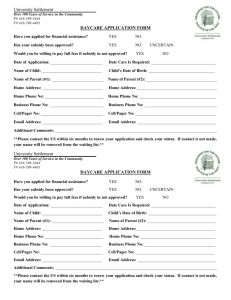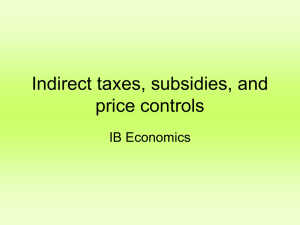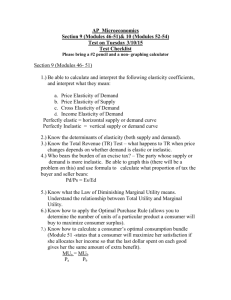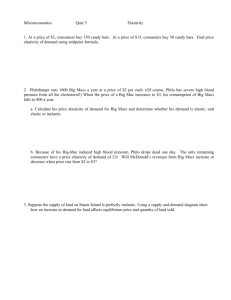indirect taxes & subsidies
advertisement
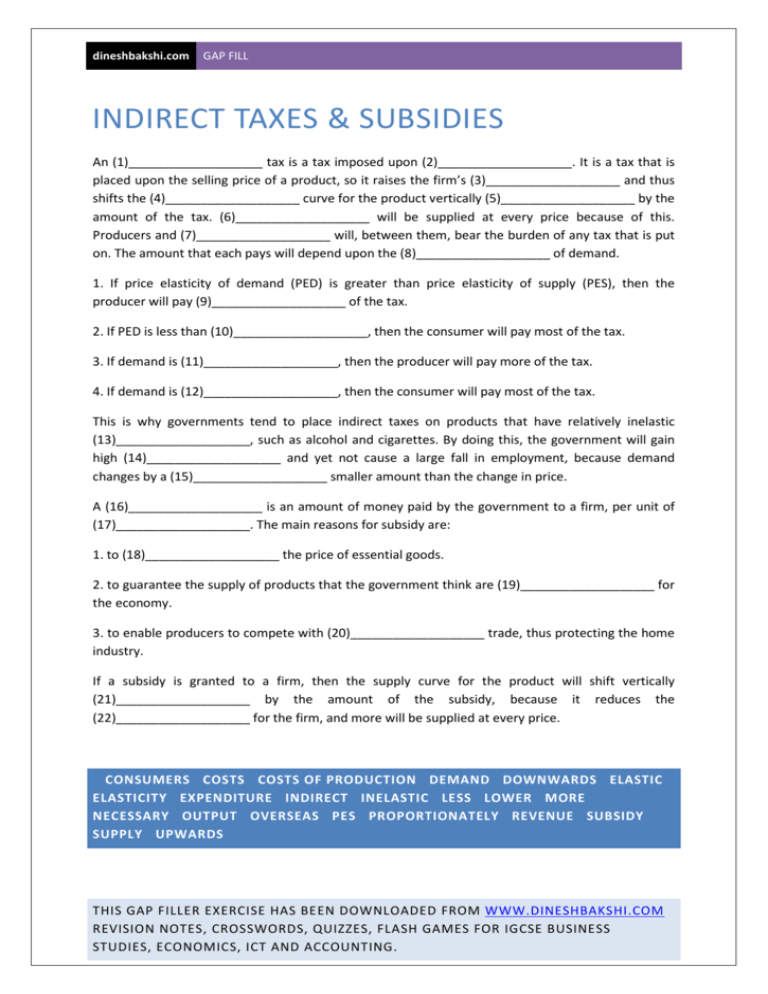
dineshbakshi.com GAP FILL INDIRECT TAXES & SUBSIDIES An (1)___________________ tax is a tax imposed upon (2)___________________. It is a tax that is placed upon the selling price of a product, so it raises the firm’s (3)___________________ and thus shifts the (4)___________________ curve for the product vertically (5)___________________ by the amount of the tax. (6)___________________ will be supplied at every price because of this. Producers and (7)___________________ will, between them, bear the burden of any tax that is put on. The amount that each pays will depend upon the (8)___________________ of demand. 1. If price elasticity of demand (PED) is greater than price elasticity of supply (PES), then the producer will pay (9)___________________ of the tax. 2. If PED is less than (10)___________________, then the consumer will pay most of the tax. 3. If demand is (11)___________________, then the producer will pay more of the tax. 4. If demand is (12)___________________, then the consumer will pay most of the tax. This is why governments tend to place indirect taxes on products that have relatively inelastic (13)___________________, such as alcohol and cigarettes. By doing this, the government will gain high (14)___________________ and yet not cause a large fall in employment, because demand changes by a (15)___________________ smaller amount than the change in price. A (16)___________________ is an amount of money paid by the government to a firm, per unit of (17)___________________. The main reasons for subsidy are: 1. to (18)___________________ the price of essential goods. 2. to guarantee the supply of products that the government think are (19)___________________ for the economy. 3. to enable producers to compete with (20)___________________ trade, thus protecting the home industry. If a subsidy is granted to a firm, then the supply curve for the product will shift vertically (21)___________________ by the amount of the subsidy, because it reduces the (22)___________________ for the firm, and more will be supplied at every price. CONSUMERS COSTS COSTS OF PRODUCTION DEMAND DOWNWARDS ELASTIC ELASTICITY EXPENDITURE INDIRECT INELASTIC LESS LOWER MORE NECESSARY OUTPUT OVERSEAS PES PROPORTIONATELY REVENUE SUBSIDY SUPPLY UPWARDS THIS GAP FILLER EXERCISE HAS BEEN DOWNLOADED FROM WWW.DINESHBAKSHI.COM REVISION NOTES, CROSSWORDS, QUIZZES, FLASH GAMES FOR IGCSE BUSINESS STUDIES, ECONOMICS, ICT AND ACCOUNTING. dineshbakshi.com GAP FILL KEY INDIRECT TAXES & SUBSIDIES An indirect tax is a tax imposed upon expenditure. It is a tax that is placed upon the selling price of a product, so it raises the firm’s costs and thus shifts the supply curve for the product vertically upwards by the amount of the tax. Less will be supplied at every price because of this. Producers and consumers will, between them, bear the burden of any tax that is put on. The amount that each pays will depend upon the elasticity of demand. 1. If price elasticity of demand (PED) is greater than price elasticity of supply (PES), then the producer will pay more of the tax. 2. If PED is less than PES, then the consumer will pay most of the tax. 3. If demand is elastic, then the producer will pay more of the tax. 4. If demand is inelastic, then the consumer will pay most of the tax. This is why governments tend to place indirect taxes on products that have relatively inelastic demand, such as alcohol and cigarettes. By doing this, the government will gain high revenue and yet not cause a large fall in employment, because demand changes by a proportionately smaller amount than the change in price. A subsidy is an amount of money paid by the government to a firm, per unit of output. The main reasons for subsidy are: 1. to lower the price of essential goods. 2. to guarantee the supply of products that the government think are necessary for the economy. 3. to enable producers to compete with overseas trade, thus protecting the home industry. If a subsidy is granted to a firm, then the supply curve for the product will shift vertically downwards by the amount of the subsidy, because it reduces the costs of production for the firm, and more will be supplied at every price. THIS GAP FILLER EXERCISE HAS BEEN DOWNLOADED FROM WWW.DINESHBAKSHI.COM REVISION NOTES, CROSSWORDS, QUIZZES, FLASH GAMES FOR IGCSE BUSINESS STUDIES, ECONOMICS, ICT AND ACCOUNTING.
